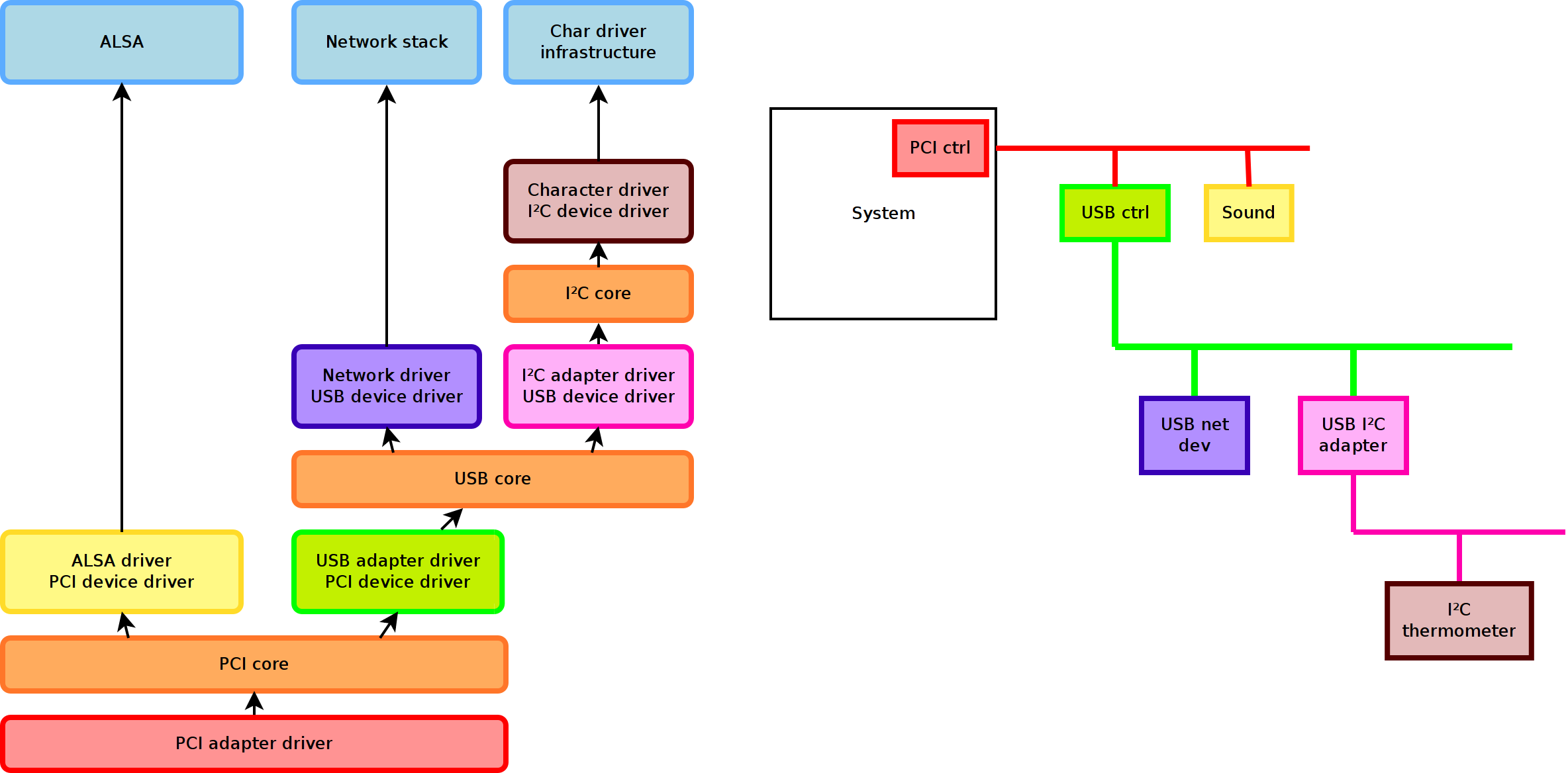The Embedded Linux Conference 2011 took place between April, 11th and April, 13th in its now usual place, the Kabuki hotel in San Francisco, California. It was the first edition organized since the merge of the CE Linux Forum into the Linux Foundation. During three days, three parallel tracks of talks and BoFs about technical topics around embedded Linux : kernel support, power management, build systems, file systems, real-time, and more.
As usual, part of the Bootlin team was at this Embedded Linux Conference, in order to keep up with the latest developments from the embedded Linux community. Gregory Clement (left on the picture), Maxime Ripard (right on the picture) and myself (center on the picture) were present, and we recorded all talks of the conference. And just a little bit more than one month later, we are ready to announce that all videos are now available online, in 1080p high-definition, and in a lower 450p resolution, encoded with the new VP8 codec.
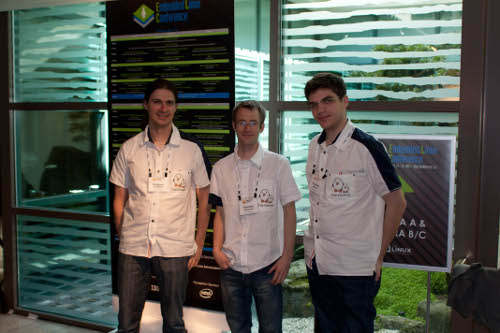
Amongst all the conferences below, each of us have selected the three ones we thought were the most interesting ones (note that the top three for each us is necessarily composed of distinct talks, as none of us have seen the same talks since we had to record talks from three different sessions in parallel) :
- For Gregory Clement, the top three is: Yoshiya Hirase talk about Faster Resume For More Energy Savings on MeeGo, Arnd Bergmann talk about Optimizations For Cheap Flash Media (which follows Arnd article on the same topic in LWN) and a set of three related talks about the video infrastructure in the Linux kernel, that Gregory recommends to watch in this order: Media Controller Framework (MCF) For OMAP2+ Display Subsystem (Sumit Semwal), Video4linux: Progress, New videobuf2 Framework and the Future (Hans Verkuil) and Bringing up HDMI Display for OMAP4 Panda Board – Design, Challenges and Lessons Learned (Mythri pk).
- For Maxime Ripard, the top three is: John Stultz talk about Android for servers, Mike Anderson talks about ARM NEON and GPU programming, Wolfram Sang talk about Helping the process
- For myself, the top three is: Jesse Barker talks about the ARM Graphics ecosystem which gives a nice overview of the state of this topic, Hai Shalom talk about PCD (which is an original and interesting replacement for init), Dave Stewart talk about The Yocto Project and its Application Development Toolkit (because it gives details on how Yocto is supposed to be used for application development, a topic I’m interested in as a Buildroot developer)
It is also worth noting that this Embedded Linux Conference was co-located with the first edition of the Android Builders Summit, for which we will soon publish videos as well. The next embedded Linux conference will take place in Europe, in Prague from October 26th to 28th, co-located with the first edition of LinuxCon Europe and just after the Kernel Summit. Prague will really be full of Linux developers during this end of October, it’s time to book this week on your agenda as well !
 In agreement with the speakers, these videos are released under the terms of the Creative Commons Attribution-ShareAlike 3.0 license.
In agreement with the speakers, these videos are released under the terms of the Creative Commons Attribution-ShareAlike 3.0 license.
Finally, the list of all videos of Embedded Linux Conference 2011, along with their corresponding slides :
Tim Bird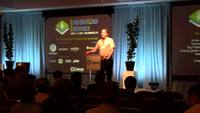
Sony Network Entertainment
Welcome Keynote
Video (10 minutes):
full HD (131M), 450×800 (43M)
Dirk Hohndel, Richard Purdie
Intel, Linux Foundation
The Yocto Project
Video (35 minutes):
full HD (458M), 450×800 (140M)
Keshava Munegowda
Texas Instruments
Power Fail Safe FAT File Systems
Slides
Video (48 minutes):
full HD (693M), 450×800 (203M)
Frank Rowand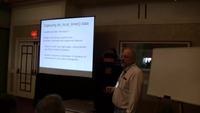
Sony
Identifying embedded real-time issues: I-cache and locks
Slides
Video (46 minutes):
full HD (471M), 450×800 (147M)
Bruno Cardoso Lopes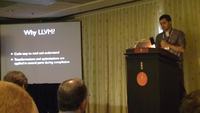
University of Campinas
LLVM, Clang and Embedded Linux Systems
Slides
Video (50 minutes):
full HD (593M), 450×800 (164M)
Steven Rostedt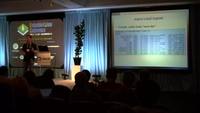
RedHat
Kernel Shark Tutorial
Video (49 minutes):
full HD (743M), 450×800 (215M)
Kang Dongwook
ETRI
Snapshoot Booting on Embedded Linux
Slides
Video (33 minutes):
full HD (284M), 450×800 (95M)
Khem Raj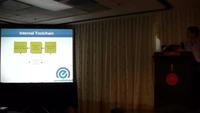
State of OpenEmbedded Internal Toolchain and SDKs
Slides
Video (41 minutes):
full HD (289M), 450×800 (119M)
David Rusling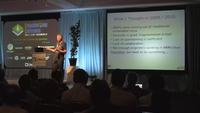
Linaro
Linaro: a year of change
Slides
Video (50 minutes):
full HD (529M), 450×800 (173M)
Hai Shalom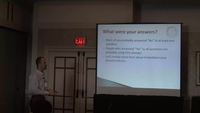
Atheros
Control, recover and debug your embedded product with PCD
Slides
Video (50 minutes):
full HD (470M), 450×800 (160M)
Gene Sally
Zigbee Networking and Linux
Video (53 minutes):
full HD (262M), 450×800 (139M)
Xi Wang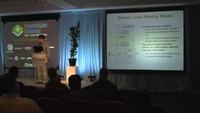
Broadcom
Solving real-time scheduling problems with RT_PREEMPT and deadline-based scheduler
Slides
Video (43 minutes):
full HD (422M), 450×800 (141M)
Mike Anderson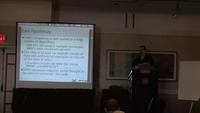
The PTR Group
ARM Neon instruction set and why you should care
Slides
Video (53 minutes):
full HD (527M), 450×800 (169M)
Darren Hart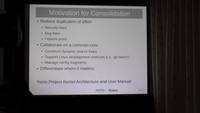
Intel
Yocto Project: Practical Kernel Development Tutorial
Video (52 minutes):
full HD (551M), 450×800 (196M)
Arnd Bergmann
IBM
Optimizations for cheap flash media
Slides
Video (49 minutes):
full HD (482M), 450×800 (160M)
Wolfram Sang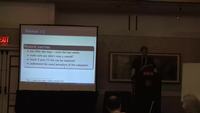
Pengutronix
Developer’s diary: helping the process
Slides
Video (39 minutes):
full HD (315M), 450×800 (112M)
Rajesh Lal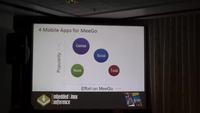
Nokia
Fun with QML and Javascript
Slides
Video (39 minutes):
full HD (250M), 450×800 (108M)
Thomas Gleixner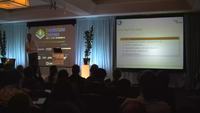
Linutronix
RT-Preempt: what’s the state and why there is no roadmap
Slides
Video (46 minutes):
full HD (447M), 450×800 (149M)
Jason Kridner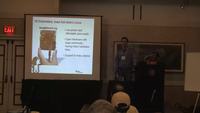
Texas Instruments
High-level web interface to low-level I/O on the BeagleBoard
Slides
Video (36 minutes):
full HD (370M), 450×800 (115M)
Arnd Bergmann
IBM
Becoming part of the Linux kernel community
Slides
Video (34 minutes):
full HD (376M), 450×800 (126M)
Paul Mundt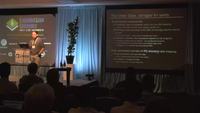
Renesas
Working with hardIRQs: life beyond static IRQ assignments
Slides
Video (36 minutes):
full HD (330M), 450×800 (113M)
Amit Kucheria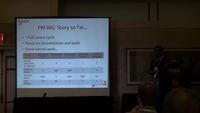
Linaro
Powerdebugging inside Linaro
Slides
Video (46 minutes):
full HD (309M), 450×800 (136M)
Mike Anderson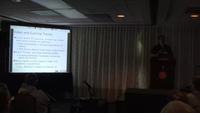
The PTR Group
High-performance computing using GPUs
Slides
Video (57 minutes):
full HD (615M), 450×800 (185M)
Paul Larson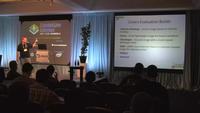
Canonical
Linaro automated validation on ARM
Video (51 minutes):
full HD (581M), 450×800 (184M)
Dave Stewart
Intel
The Yocto project and its application development toolkit (ADT) – The answer to effective embedded application development
Video (42 minutes):
full HD (362M), 450×800 (139M)
Damian Hobson Garcia, Katusya Matsubara, Takanari Hayama, Hisao Munakata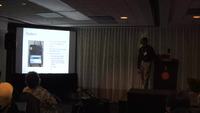
Igel
Integrating a Hardware Video Codec into Android Stagefright using OpenMAX IL
Slides
Video (55 minutes):
full HD (564M), 450×800 (177M)
Koen Kooi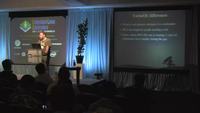
Texas Instruments
Integrating OpenEmbedded and Yocto
Slides
Video (52 minutes):
full HD (465M), 450×800 (159M)
Mark Gross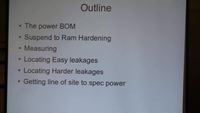
Intel
How to power tune a device running on a Linux kernel for better suspend battery life
Slides
Video (49 minutes):
full HD (273M), 450×800 (129M)
Remi Lorriaux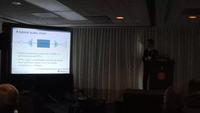
Adeneo Embedded
Real-time audio on embedded devices
Slides
Video (44 minutes):
full HD (437M), 450×800 (138M)
Magnus Damm
Runtime PM: upstream I/O device power management
Slides
Video (53 minutes):
full HD (486M), 450×800 (164M)
Jesse Barker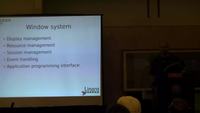
Linaro
Linux graphics meets the ARM ecosystem
Slides
Video (50 minutes):
full HD (329M), 450×800 (147M)
David Anders
Texas Instruments
Board bringup: open-source hardware and software tools
Slides
Video (38 minutes):
full HD (376M), 450×800 (118M)
John Williams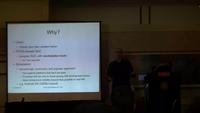
PetaLogix
Dynamic co-simulation of FPGA-based systems on chip
Slides
Video (57 minutes):
full HD (567M), 450×800 (198M)
Summit Semwal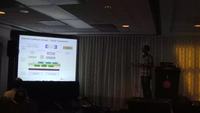
Texas Instruments
Media Controller Framework (MCF) for OMAP2+ display subsystem
Slides
Video (49 minutes):
full HD (518M), 450×800 (155M)
John Stultz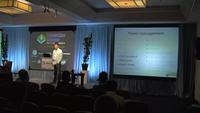
IBM
Android for servers?
Slides
Video (37 minutes):
full HD (425M), 450×800 (137M)
Anand Gadiyar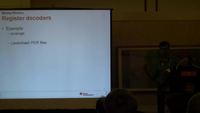
Texas Instruments
Tools and techniques for debugging embedded systems
Slides
Video (30 minutes):
full HD (139M), 450×800 (81M)
Hans Verkuil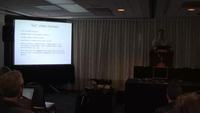
Cisco
Video4linux: progress, new videobuf2 framework and the future
Slides
Video (56 minutes):
full HD (534M), 450×800 (171M)
Yoshiya Hirase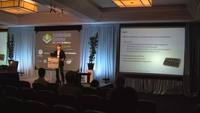
Nokia
Faster resume for more energy saving on MeeGo
Slides
Video (58 minutes):
full HD (727M), 450×800 (218M)
Jake Edge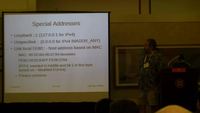
Linux Weekly News
What embedded Linux developers should know about IPv6
Slides
Video (46 minutes):
full HD (266M), 450×800 (122M)
Grégoire Gentil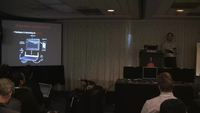
Always Innovating
Hot multi-OS switch: how to run Ubuntu, ChromiumOS, Android at the same time on an embedded device
Video (61 minutes):
full HD (515M), 450×800 (174M)
Xi Wang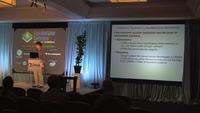
Broadcom
Controlling memory footpring at all layers: Linux kernel, applications, libraries and toolchain
Slides
Video (38 minutes):
full HD (511M), 450×800 (152M)
Tom Zanussi, Saul Wold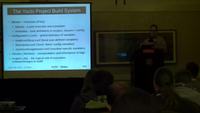
Building custom embedded images with Yocto
Slides
Video (49 minutes):
full HD (500M), 450×800 (173M)
Philip Balister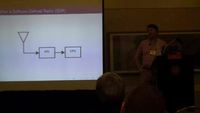
Open SDR
A high performance interface between the OMAP3 and a FPGA
Slides
Video (51 minutes):
full HD (347M), 450×800 (149M)
Jean Pihet
NewOldBits.com
The evolution of tracing and profiling for power management and accelerators
Slides
Video (40 minutes):
full HD (428M), 450×800 (133M)
Elizabeth Flanagan
Intel
Delivering predictability: the Yocto project autobuilder, automated sanity testing, license collection and build statistics tracking
Slides
Video (48 minutes):
full HD (241M), 450×800 (133M)
Mythri pk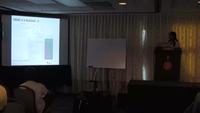
Texas Instruments
Bringing up HDMI display for OMAP4 Panda board: design, challenges and lessons learned
Slides
Video (40 minutes):
full HD (363M), 450×800 (122M)
Khem Raj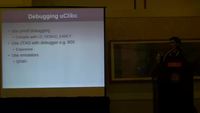
Debug/develop uClibc with QEMU
Slides
Video (35 minutes):
full HD (226M), 450×800 (98M)
Gunter Ravi Sankar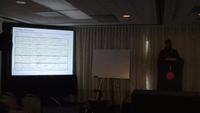
Samsung
What are and how to find a program’s unused DSOs
Slides
Video (49 minutes):
full HD (453M), 450×800 (143M)


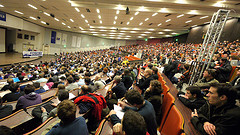

 The
The 

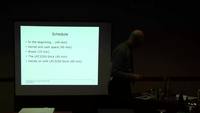

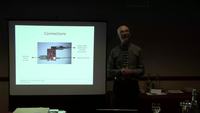
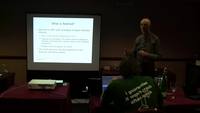


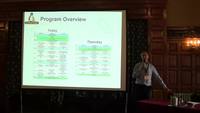
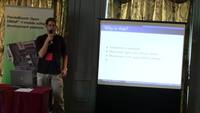
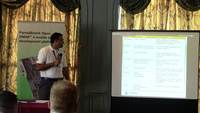
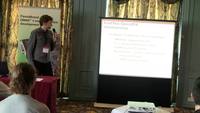
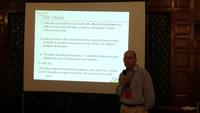

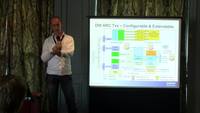
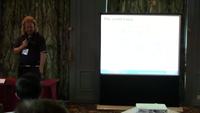
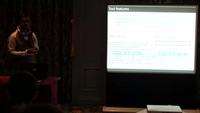
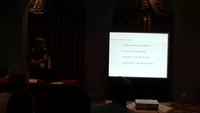
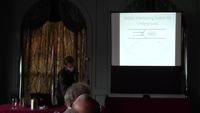
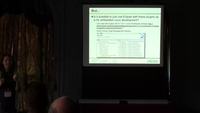
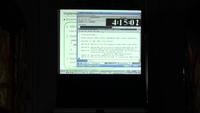
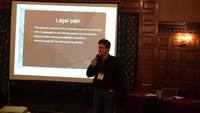

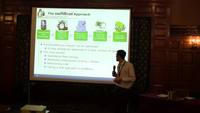

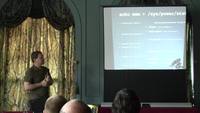
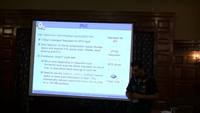
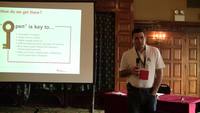
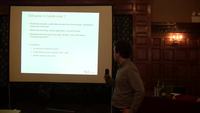
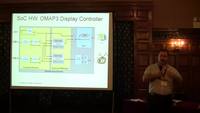
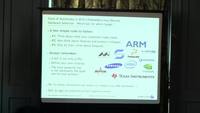
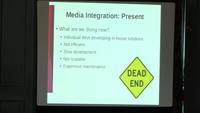

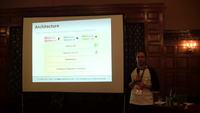
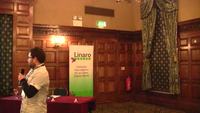
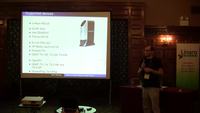

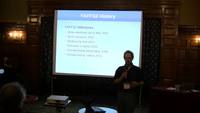



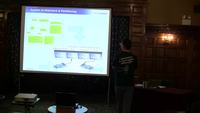
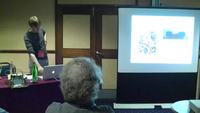
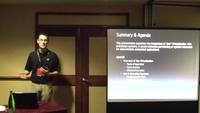
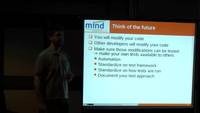
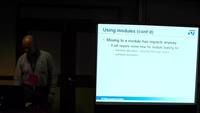

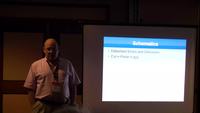
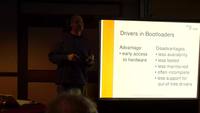
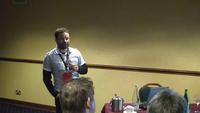
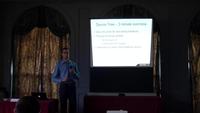

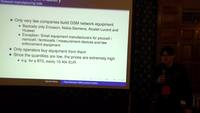


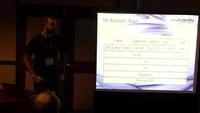

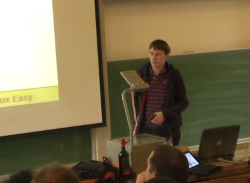
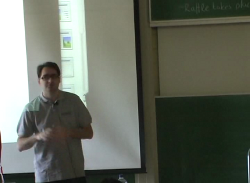
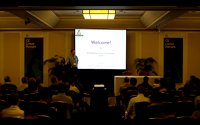
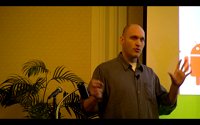
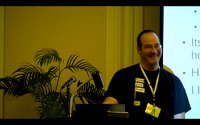

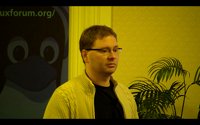

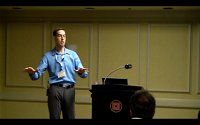


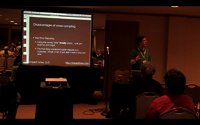
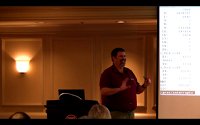
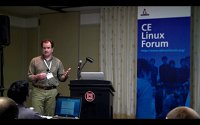
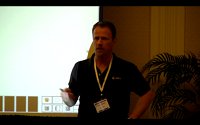


 Being a member of the organization committee of the Embedded Linux Conference Europe, I get access to fresh news about this yearly conference. The call for presentations is now over and we have just announced
Being a member of the organization committee of the Embedded Linux Conference Europe, I get access to fresh news about this yearly conference. The call for presentations is now over and we have just announced 